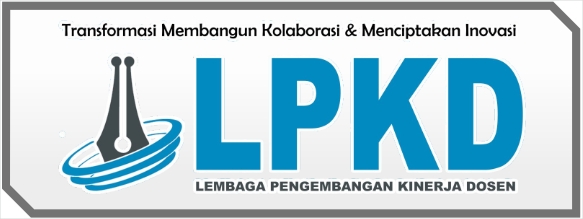Hubungan Post Traumatic Growth Dengan Kualitas Hidup Pada Anak Usia Sekolah Yang Sedang Menjalani Palliative Care
DOI:
https://doi.org/10.55606/jurrikes.v2i2.1676Keywords:
Post-Traumatic Growth, Quality of Life, Palliative Care For School-Aged ChildrenAbstract
Chronic disease in children requires long-term care because of the prognosis and development of the disease. Chronic illness is not an easy thing for children and parents to deal with. Children undergoing medical and nursing care are scary things, these conditions require them to adapt to new routines that are part of their lives every day. This condition can be categorized as a traumatic event, which can affect psychological changes. These psychological changes are called post traumatic growth. Changes in these conditions become one of the factors that affect the quality of life. This study aims to determine the relationship between post traumatic growth and the quality of life of school-age children who are undergoing palliative care. This type of quantitative research with cross sectional approach method. The sampling technique used was purposive sampling with a sample size of 63 respondents. Based on the results of the Sperm- rank statistical test, a p-value of 0.013 was obtained with a positive correlation with a result of 0.312, so that it can be interpreted that there is a relationship between post traumatic growth and the quality of life of school-age children undergoing palliative care. Suggestions to parents or families are expected to always pay attention to physical and psychological conditions, as well as provide motivation and enthusiasm in undergoing palliative care so as to improve the quality of life in patients after experiencing a post traumatic growth process.
References
Amalia, N. I., & Listia, M. (2020). Perawatan Paliatif Terhadap Kualitas Hidup Pasien Kanker Payudara. Jurnal Keperawatan Silampari, Volume 4, Nomor 1. https://doi.org/10.31539/jks.v4i1.1 328
Aprilliani, A. N., Lubis, H., & Ramadhani, A. (2022). Posttraumatic Growth pada Wanita Survivor. Jurnal Imiah Psikolog, Volume 10, 455–476. https://doi.org/http://dx.doi.org/10. 30872/psikoborneo.v10i3
Bernard, M., Poncin, E., Althaus, B., & Borasio, G. D. (2022). Posttraumatic growth in palliative care patients and its associations with psychological distress and quality of life. Palliative & Support Care.https://doi.org/10.1017/S147 8951521002066
Chrisnawati, C., Anggraini, S., & Agustina, D. M. (2022). Pengaruh Hipnoparenting Terhadap Mual Muntah Akibat Kemoterapi pada Anak dengan Akut Limpoblastik Leukemia. Jurnal Keperawatan Suaka Insan (JKSI), 3(2), 1–12. https://doi.org/10.51143/jksi.v3i2.9 9
Hendrawati, S., Nurhidayah, I., & Mardhiyah, A. (2019). Self- Efficacy Parents in Undergoing Child Cancer Treatment at the Rumah Kanker Anak Cinta Bandung. NurseLine Journal, 4(1), 37.https://doi.org/10.19184/nlj.v4i 1.8911
Kiotseridis H, Cilio CM, Bjerner L, Aurivillius M, Jacobsson H,Dahl A, Tunsater A. Quality of Life in Children an Adolescents wuth Respiratory Allergy, Assessed with a generic and disease-specifc instrument. Clin Respir J 2012; 7:169-75.
Marnis, D., Indriati, G., & Nauli, F. A. (2018). Hubungan Tingkat Pengetahuan dengan Kualitas Advanced Directives in Palliative Care. Jurnal Penyakit Dalam Indonesia, vol.7.
Silampari, J. K., Kamilah, S., & Andalas, U. (2023). Karakteristik anak leukemia limfoblastik akut yang menjalani kemoterapi. 6, 1040– 1045.
Suharda & Mikal-Flynn, J. (2019). Hubungan post traumatic growth terhadap kualitas hidup pasien CA. mamae di RSUD kota Makassar. Nursing, 47(2), 48–52. https://doi.org/10.1097/01.nurse.00 00511809.06206.7e
Üstündağ, S., & Zencirci, A. D. (2019). Faktor-faktor yang mempengaruhi kualitas hidup pasien kanker yang menjalani kemoterapi: Studi kuesioner. Asia Pac J Oncol Nurs, 2(1), 17–25. https://doi.org/10.4103/2347- 5625.152402 Hidup Anak Thalasemia. Jurnal Keperawatan Sriwijaya, 5(2), 31– 42.
Shatri, H., Faisal, E., Putranto, R., & Sampurna, B. (2020). Advanced Directives pada Perawatan Paliatif
Priliana, W. K., Indriasari, F. N., & Pratiwi, E. (2018). Hubungan usia, jenis kelamin dan jenis kanker terhadap kualitas hidup anak dengan kanker. Jurnal Keperawatan Notokusumo, VI(1), 48–55.
WHO, W. H. O., & Samiati. (2019). World Health Organization (WHO).
Xin Xu, Hu, M., Song, Y., Lu, Z., Chen, Y., Da-xing Wu, A., & B, T. X. (2019). Pengaruh Intervensi Psikologis Positif pada Pertumbuhan Pascatrauma di Antara Pekerja Kesehatan Primer di Cina: Studi Prospek Awal. https://doi.org/10.1038/srep39189
Yuhaba,zidni nuris, Winarni, I., & Lestari, R. (2017). Studi Fenomenologi : Post Traumatic Growth Pada Orang tua Anak Penderita Kanker. Jurnal Ilmu Keperawatan, Vol. 5, No
Downloads
Published
How to Cite
Issue
Section
License
Copyright (c) 2023 Canissa Ajeng Rafiska, Siti Lestari, Muhammad Anis Taslim

This work is licensed under a Creative Commons Attribution-ShareAlike 4.0 International License.
















